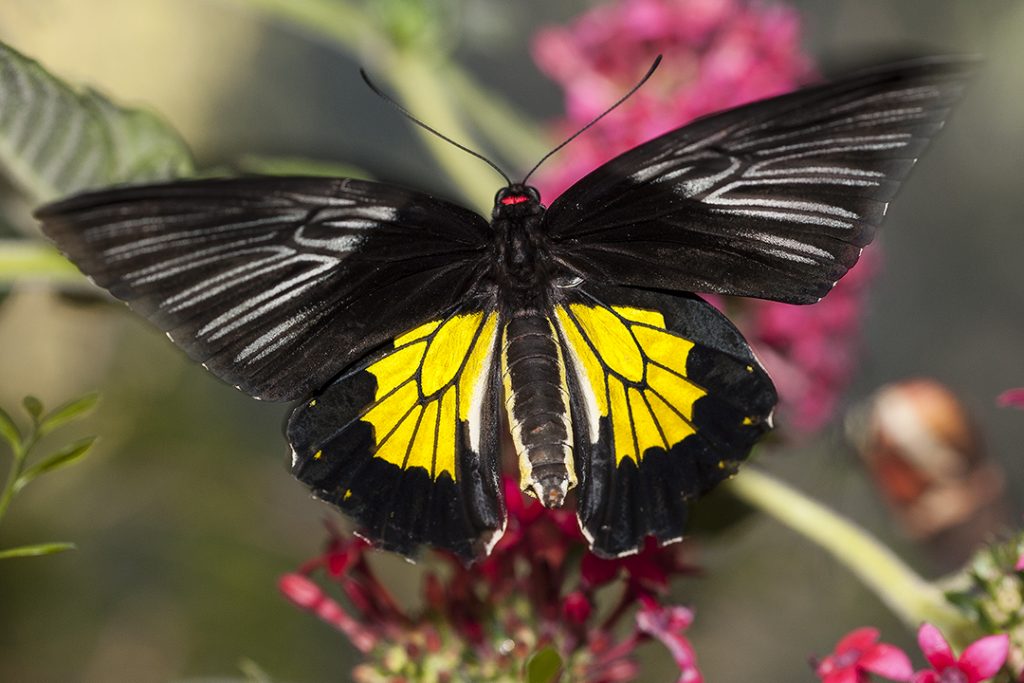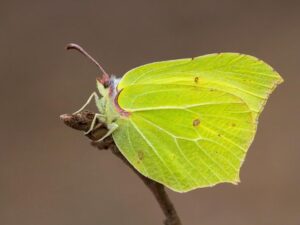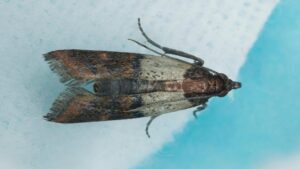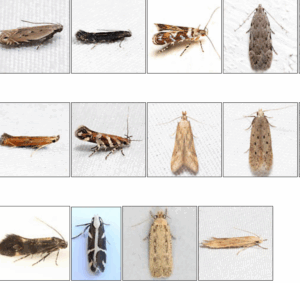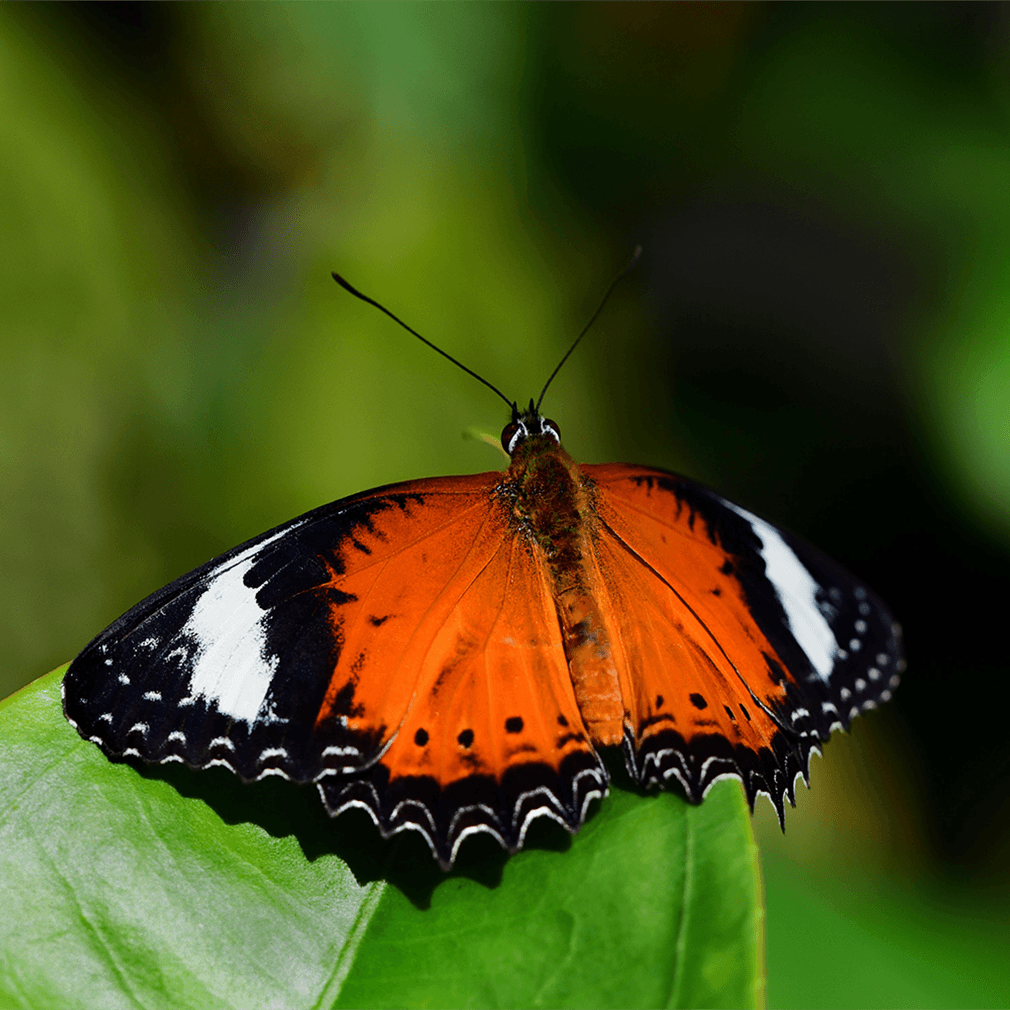
People love watching colorful butterflies float from flower to flower. But from the tiniest blues to the largest swallowtails, how much do you really know about these insects? Here are 10 butterfly facts you’ll find fascinating.
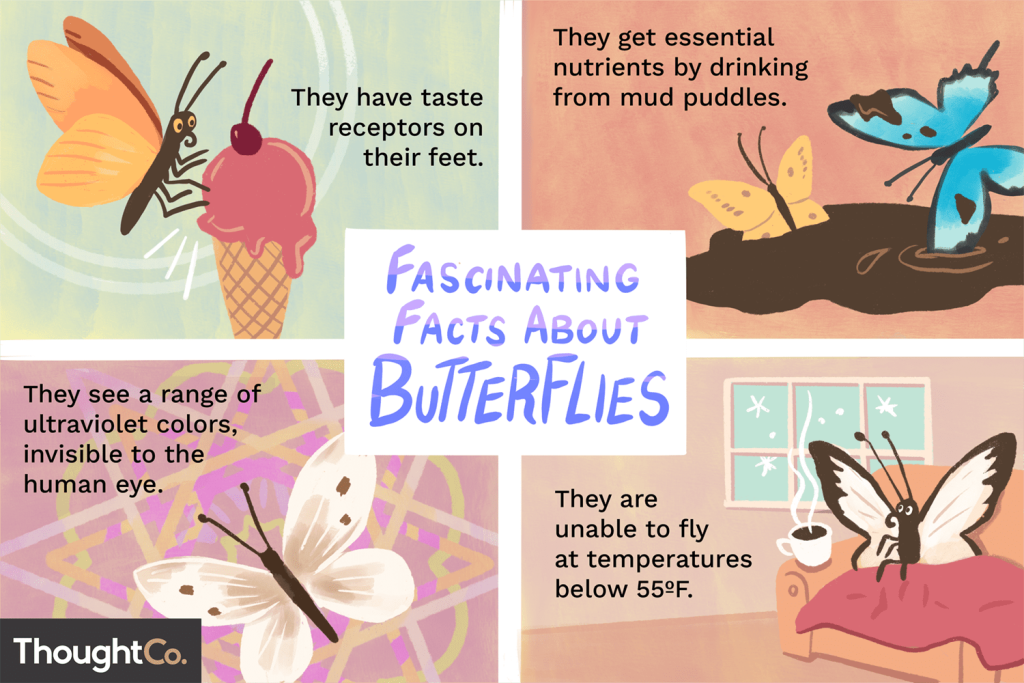
Learn all about butterflies with our 10 interesting facts about butterflies. Find out about Australia’s most iconic electric-blue Ulysses butterfly, what butterflies eat (they eat poo among other things!), and how their gorgeous wing colours are made up.
1:Butterfly Wings Are Transparent
How can that be? We know butterflies as perhaps the most colorful, vibrant insects around! Well, a butterfly’s wings are covered by thousands of tiny scales, and these scales reflect light in different colors. But underneath all of those scales, a butterfly wing is actually formed by layers of chitin—the same protein that makes up an insect’s exoskeleton. These layers are so thin you can see right through them. As a butterfly ages, scales fall off the wings, leaving spots of transparency where the chitin layer is exposed.
2:Butterflies Taste With Their Feet
Butterflies have taste receptors on their feet to help them find their host plants and locate food. A female butterfly lands on different plants, drumming the leaves with her feet until the plant releases its juices. Spines on the back of her legs have chemoreceptors that detect the right match of plant chemicals. When she identifies the right plant, she lays her eggs. A butterfly of any biological sex will also step on its food, using organs that sense dissolved sugars to taste food sources like fermenting fruit.
3:Butterflies Live on an All-Liquid Diet
Speaking of butterflies eating, adult butterflies can only feed on liquids—usually nectar. Their mouthparts are modified to enable them to drink, but they can’t chew solids. A proboscis, which functions as a drinking straw, stays curled up under the butterfly’s chin until it finds a source of nectar or other liquid nutrition. The long, tubular structure then unfurls and sips up a meal. A few species of butterflies feed on sap, and some even resort to sipping from carrion. No matter the meal, they suck it up a straw.
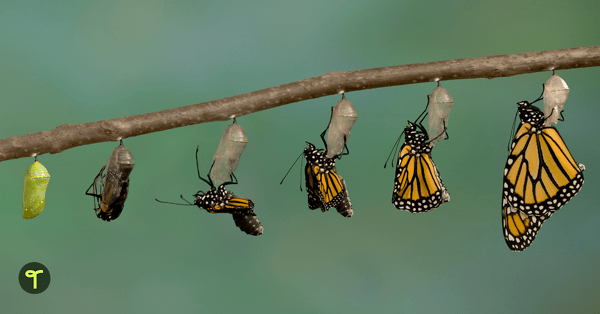
4:A Butterfly Must Assemble Its Own Proboscis—Quickly
A butterfly that can’t drink nectar is doomed. One of its first jobs as an adult butterfly is to assemble its mouthparts. When a new adult emerges from the pupal case or chrysalis, its mouth is in two pieces. Using palpi located adjacent to the proboscis, the butterfly begins working the two parts together to form a single, tubular proboscis. You may see a newly emerged butterfly curling and uncurling the proboscis over and over, testing it out.
5:Butterflies Drink From Mud Puddles
A butterfly cannot live on sugar alone; it needs minerals, too. To supplement its diet of nectar, a butterfly will occasionally sip from mud puddles, which are rich in minerals and salts. This behavior, called puddling, occurs more often in male butterflies, which incorporate the minerals into their sperm. These nutrients are then transferred to the female during mating and help improve the viability of her eggs.
6:Butterflies Can’t Fly If They’re Cold
Butterflies need an ideal body temperature of about 85 degrees Fahrenheit to fly.1 Since they’re cold-blooded animals, they can’t regulate their own body temperatures. As a result, the surrounding air temperature has a big impact on their ability to function. If the air temperature falls below 55 degrees Fahrenheit, butterflies are rendered immobile—unable to flee from predators or feed.2
When air temperatures range between 82 and 100 degrees Fahrenheit, butterflies can fly with ease.3 Cooler days require a butterfly to warm up its flight muscles, either by shivering or basking in the sun.
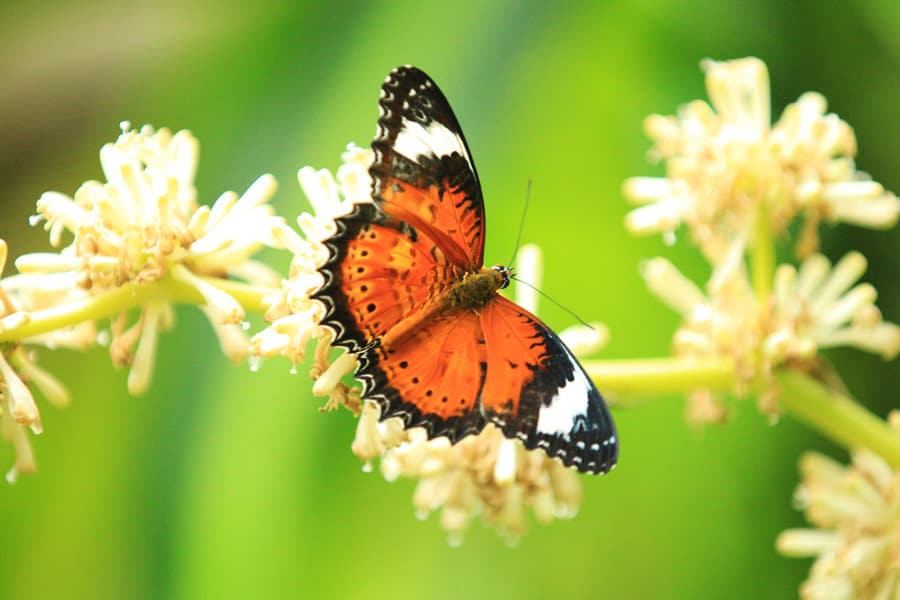
7:A Newly Emerged Butterfly Can’t Fly
Inside the chrysalis, a developing butterfly waits to emerge with its wings collapsed around its body. When it finally breaks free of the pupal case, it greets the world with tiny, shriveled wings. The butterfly must immediately pump body fluid through its wing veins to expand them. Once its wings reach their full size, the butterfly must rest for a few hours to allow its body to dry and harden before it can take its first flight.
8:Butterflies Often Live Just a Few Weeks
Once it emerges from its chrysalis as an adult, a butterfly has only two to four short weeks to live, in most cases. During that time, it focuses all its energy on two tasks: eating and mating. Some of the smallest butterflies, the blues, may only survive a few days. However, butterflies that overwinter as adults, like monarchs and mourning cloaks, can live as long as nine months.
9:Butterflies Are Nearsighted but Can See Colors
Within about 10–12 feet, butterfly eyesight is quite good.4 Anything beyond that distance gets a little blurry, though.Despite that, butterflies can see not just some of the colors that we can see, but also a range of ultraviolet colors that are invisible to the human eye. The butterflies themselves may even have ultraviolet markings on their wings to help them identify one another and locate potential mates. Flowers, too, display ultraviolet markings that act as traffic signals to incoming pollinators like butterflies.
10Butterflies Employ Tricks to Avoid Being Eaten
Butterflies rank pretty low on the food chain, with lots of hungry predators happy to make a meal of them. Therefore, they need some defense mechanisms. Some butterflies fold their wings to blend into the background, using camouflage to render themselves all but invisible to predators. Others try the opposite strategy, wearing vibrant colors and patterns that boldly announce their presence. Bright colored insects often pack a toxic punch if eaten, so predators learn to avoid them.
10 Fascinating Facts About Butterflies
Butterflies are Insects with a Unique Life Cycle
Butterflies undergo a remarkable transformation through complete metamorphosis, transitioning from egg to caterpillar to pupa to the final adult form.
Butterflies Come in a Dazzling Array of Colors and Patterns
With over 20,000 known species, butterflies display a vast diversity of vibrant colors, intricate wing patterns, and stunning visual displays.
Butterflies are Important Pollinators for Many Plants
As they feed on nectar, butterflies play a crucial role in the pollination of a wide variety of flowering plants, supporting healthy ecosystems.
Butterflies Use Their Unique Vision to Navigate the World
Butterflies possess complex visual systems, allowing them to perceive colors, patterns, and ultraviolet light in ways that differ from human sight.
Some Butterflies Migrate Thousands of Miles Each Year
Certain butterfly species, such as the iconic monarch, undertake remarkable long-distance migrations, covering vast geographical ranges.
Butterflies Taste with Their Feet and Antennae
Butterflies use their sensitive feet and antennae to taste and detect the chemical composition of their surroundings, including the plants they feed on.
Butterflies are Indicators of a Healthy Environment
The presence and diversity of butterfly populations serve as valuable indicators of the overall health and balance of their local ecosystems.
Butterflies Engage in a Unique Courtship Process
Butterflies employ intricate courtship behaviors, including aerial displays, scent production, and physical interactions, to attract mates and reproduce.
Butterflies Employ Fascinating Defense Mechanisms
Butterflies have developed various defense mechanisms, such as camouflage, warning coloration, and predator avoidance strategies, to protect themselves from threats.
Butterflies Have Inspired Art, Literature, and Culture
The beauty and symbolism of butterflies have captivated human imagination, inspiring artistic, literary, and cultural representations throughout history.
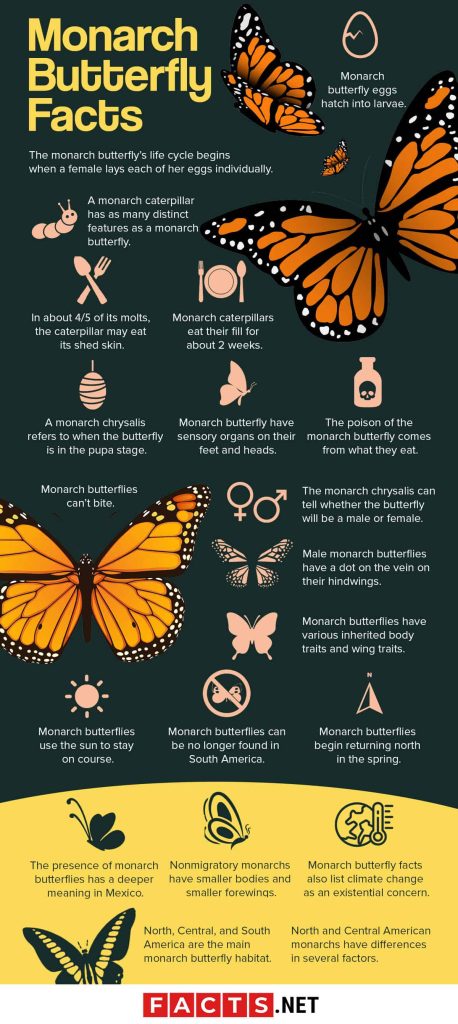
Facts About Butterflies FAQs:
What Is a Butterfly?
Looking for a handy butterfly description? Butterflies belong to a group called ‘Lepidoptera’. This is a Greek-derived name which means ‘scaly wings’.
Butterflies are the adult flying stage of this group which has a four-stage life cycle, the adult is the final stage of this.
The characteristics of butterflies include: two wings which are made up of tiny scales that reflect light and give the butterfly its striking appearance, three body parts (the head, thorax, and abdomen), six legs, two antennaes and an exoskeleton.
Is a Butterfly an Insect?
Yes. The butterfly makes up the insect order: Lepidoptera. Moths are also in this order.
Do Butterflies Have an Exoskeleton?
Yes. Butterflies have a skeleton on the outside of their bodies, unlike humans, this is called an exoskeleton. Think of it like a skin made of bones!
Do Butterflies Have Mouths?
Butterflies don’t really have mouths like we do. They use their feet to taste their food, which is usually nectar or sap. Instead of a mouth, a butterfly has a proboscis, which is a flexible, hollow tube that it keeps tightly tucked underneath its head.
Butterflies communicate through chemical cues, and some can even make loud noises with their wings. As our 10 interesting facts about butterflies have reached their pinnacle, that’s how we say goodbye in butterfly language: with a clackety-clack, clack, clack, flutter, flutter, pop, boom! Some people believe that butterflies symbolise transformation and hope. We hope you’ve enjoyed this blog on butterfly facts, and are ready for your very own metamorphosis!

